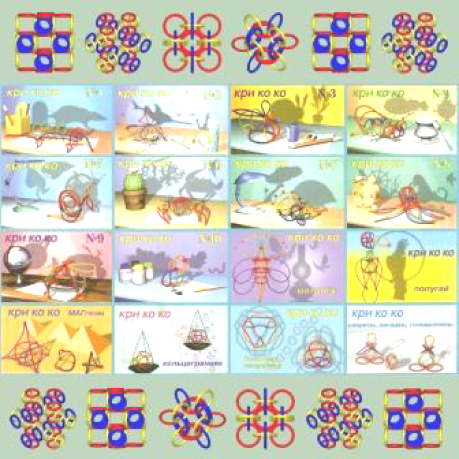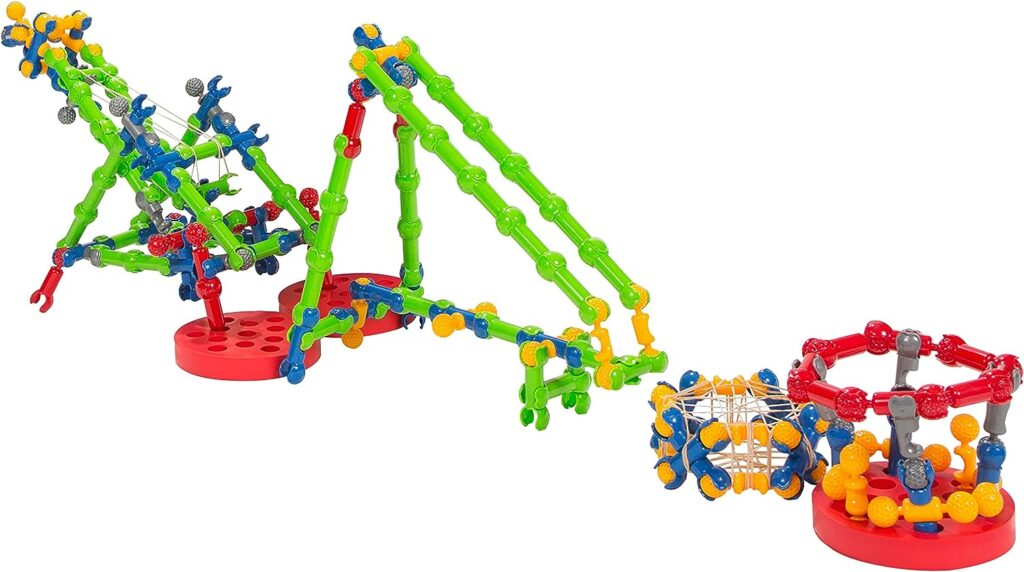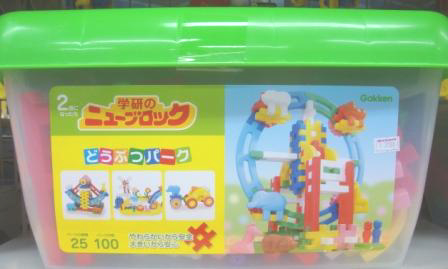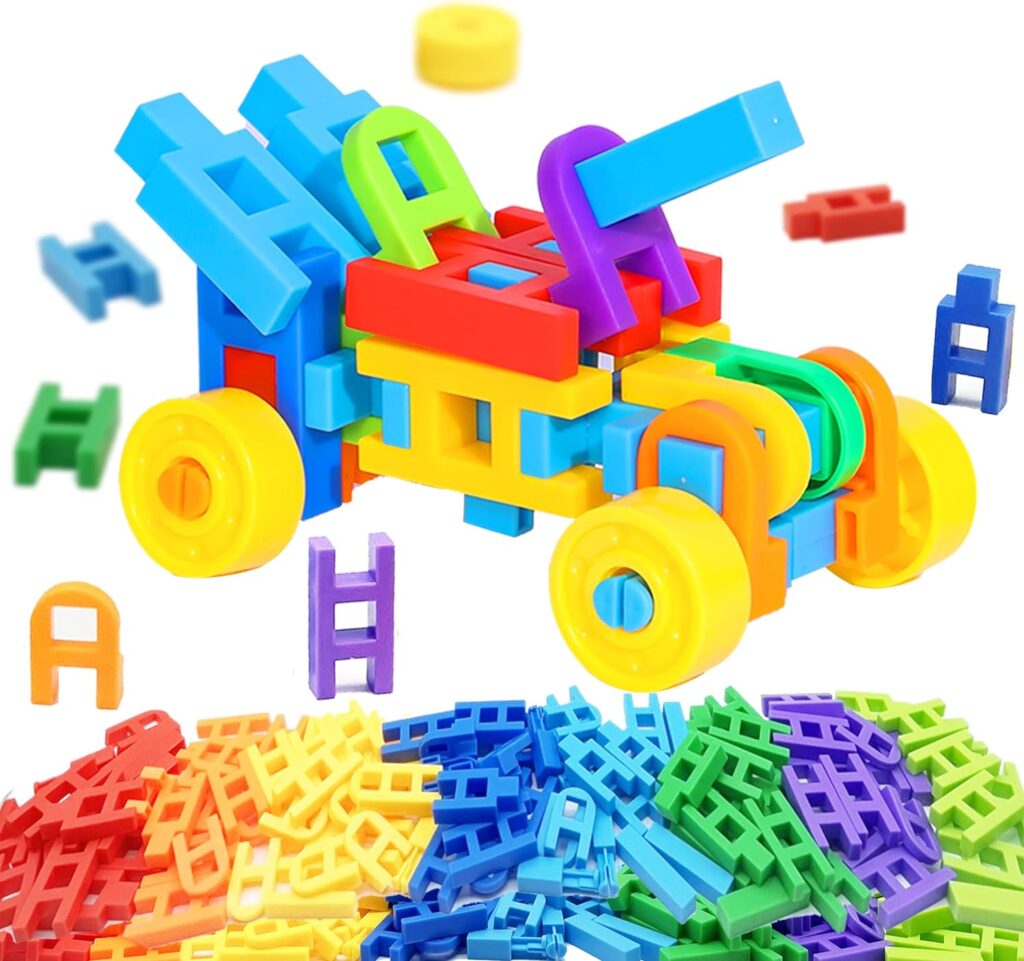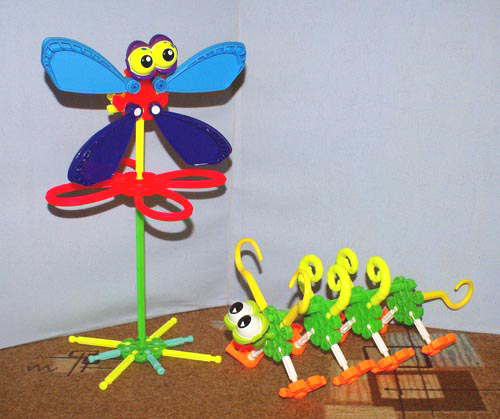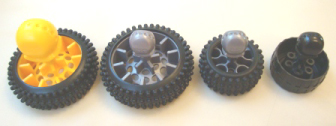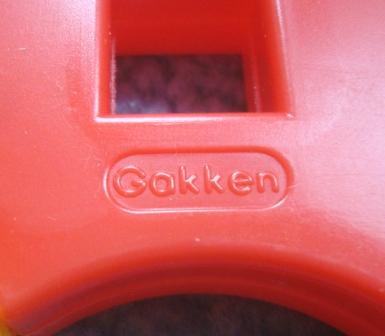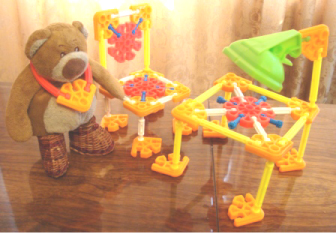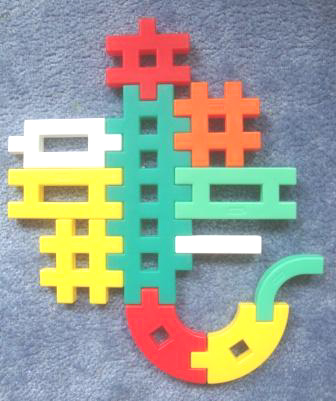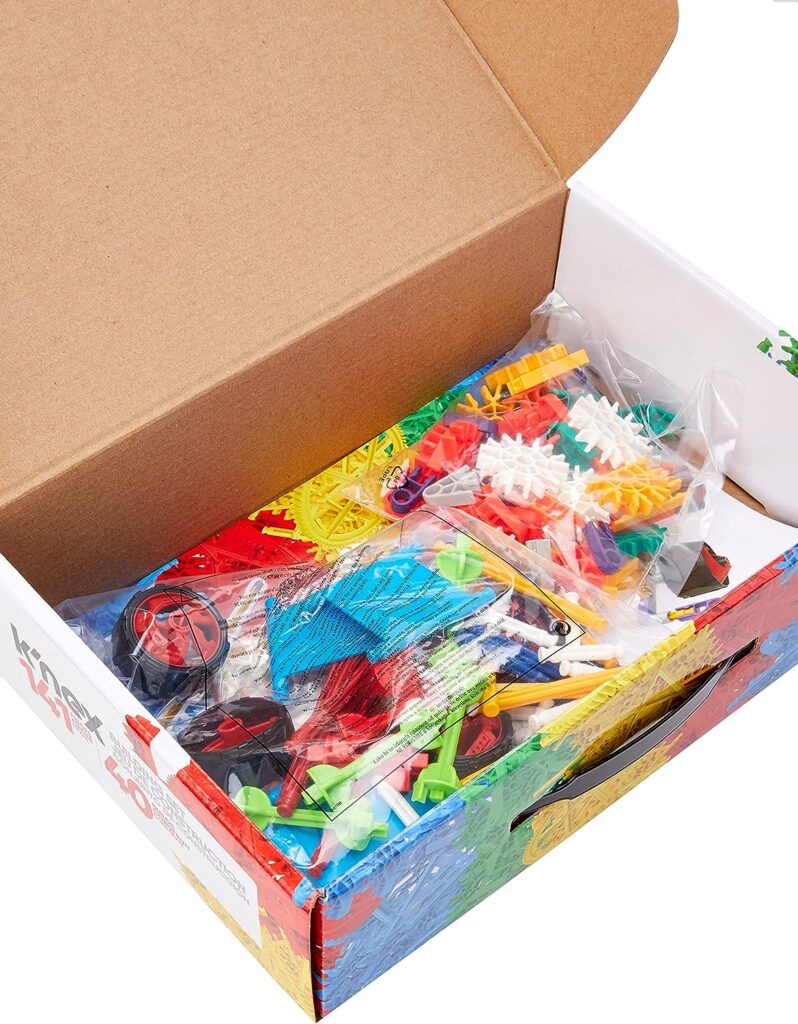The Cri-Co-Co Constructor was invented in 1989 by Alexander Kushelev and Dmitry Kozhevnikov. They patented it in 2001, then upgraded the set in 2007. It reminded me of the English building set Connecta-Straws. You can also build from cocktail tubes.
Building straws, also known as building tubes, are a popular type of construction set with unique possibilities. They allow you to create silhouettes and contours of different objects and animals. All crafts from these sets can bend and move, so kids can actually play with their creations.
Instead of blocks, these sets have flexible plastic tubes, that look and act like soft cocktail straws. They can bend in any way and hold any position you want. The tubes usually attach to each other with special plastic connectors. The connectors can look and work differently in the different sets, but there are always many ways the straws can connect. The most common version is hard pins that go inside the straw’s hollow end, fixing it in place. Some connectors of this type have only one or two pins, some may have eight or ten. They also can have different forms, like sharp corners or straight rods. However, this connection type usually means that you can connect the straws only with their ends, and never with their middles.
These straws have great building potential, but, sadly, they can’t hold their shape under pressure (unlike, say, block towers that can hold something on their top). The straws’ building possibilities also depend on how long they are.
